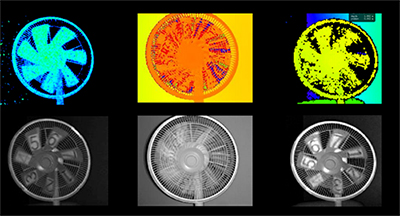We have tested that pulse ToF has good performance against the motion blur.
Lower pulse width and duty cycle is needed to achieve the depth calculation for pulse ToF technology,that makes the pulse ToF technology quite suitable in the motion scene.
What’s motion blur?
Motion blur, caused by camera or target object motions, is a critical error source for on-line 3D capturing and reconstruction with ToF cameras. Because the 3D depth measurement is used to reconstruct the 3D geometry of scene, blurred regions in a depth image lead to serious distortions in the subsequent 3D reconstruction.

Figure 1.1 ToF depth motion-blur due to movement of the target object.
In general, we repeat the calculation n times during the integration time to increase the signal-to-noise ratio.
The depth calculation expects that the reflected IR during the integration time comes from a single 3D point of the scene.However, if there is any camera or object motion during the integration time, the calculated depth will be corrupted. Figure 1.1 shows an example of this situation. The red dot represents a sensor pixel of the same location. Due the the motion of the chair, the red dot sees both foreground and background sequentially within its integration time, causing a false depth calculation as shown in the third image in figure 1.1. The spatial collection of these false-depth points looks like blur around moving object boundaries, where significant depth changes are present.
Motion Blur Test

